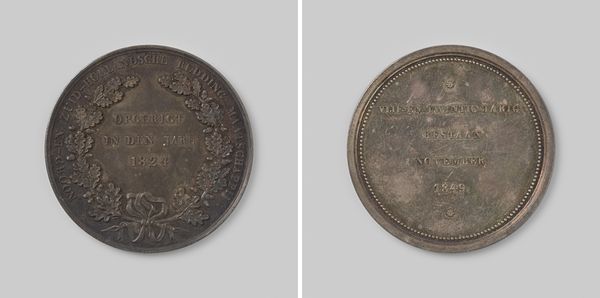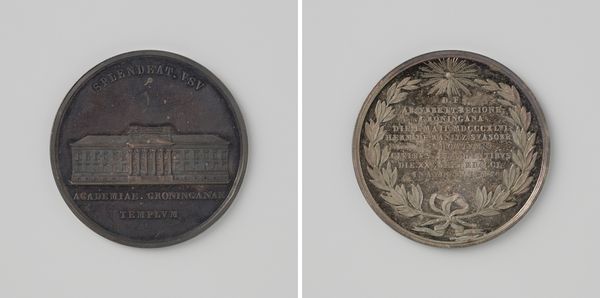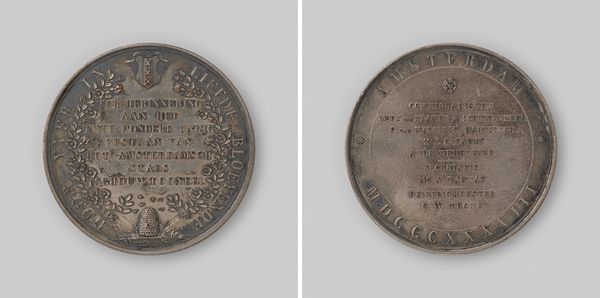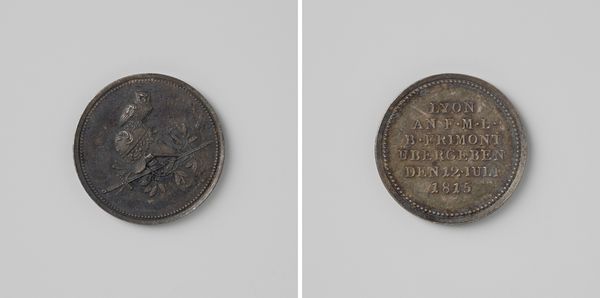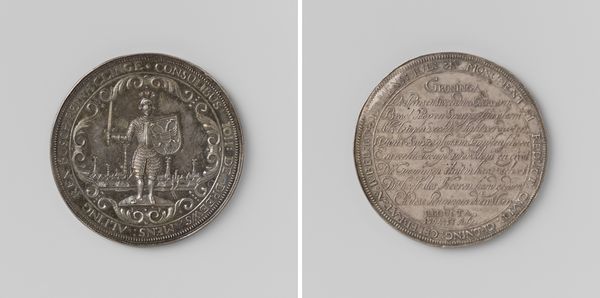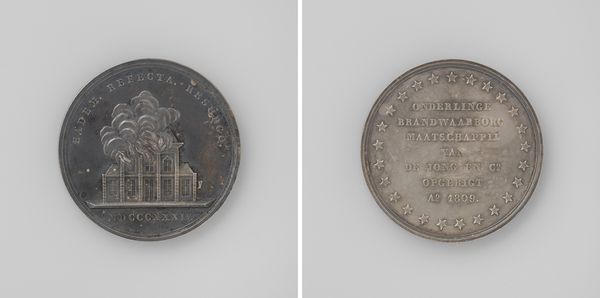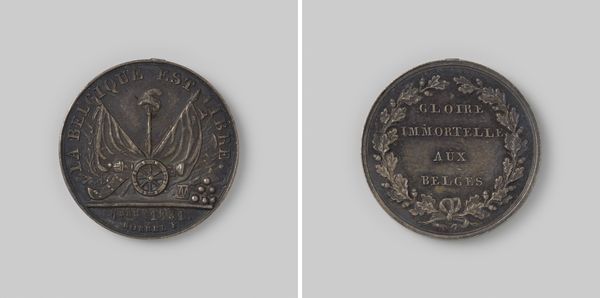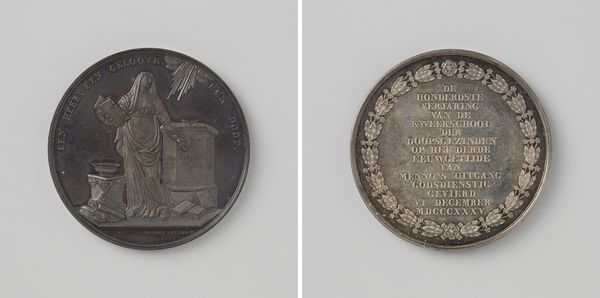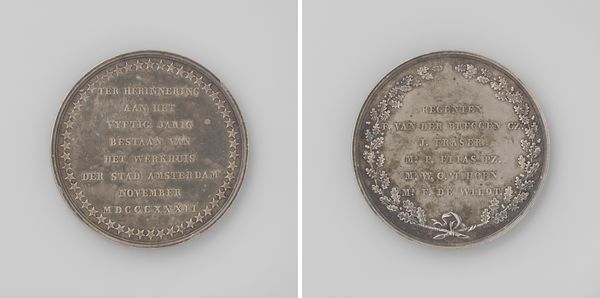
Vijfentwintigjarig bestaan van de Noord- en Zuid-Hollandsche Redding-Maatschappij 1849 1849
0:00
0:00
print, metal, relief
#
portrait
#
dutch-golden-age
# print
#
metal
#
stone
#
sculpture
#
relief
#
decorative-art
Dimensions: diameter 4.1 cm, weight 22.51 gr
Copyright: Rijks Museum: Open Domain
Editor: This is a commemorative medal from 1849, celebrating the 25th anniversary of the Noord- en Zuid-Hollandsche Redding-Maatschappij, which I believe translates to the North and South Holland Lifeboat Society. It feels like a pretty standard piece of civic art, but I'm curious – what do you see in this piece that might reveal a bit more about the history it represents? Curator: What strikes me is not just the commemoration itself, but what the act of commemoration signifies. Who gets remembered, and why? A medal like this highlights a specific narrative of Dutch identity. The Lifeboat Society evokes a very particular image of the Dutch: brave, resourceful, and dedicated to saving lives in the face of the ever-present threat of the sea. This is deeply tied to the Dutch "polder model"—the tradition of consensus and cooperation in managing their environment. Editor: That's interesting! I hadn’t considered the political and social implications behind commemorating something like this. It also reminds me of the collective action required. Curator: Exactly! Think about the political climate of 1849. Europe was experiencing revolutionary upheaval. Commemorating a society dedicated to collective rescue efforts sends a message of social cohesion and perhaps subtly promotes a sense of national unity in a time of potential fragmentation. Editor: So, the medal is not just about remembering a historical event, it’s about solidifying certain social values and a particular version of Dutch identity? Curator: Precisely. The very act of striking a medal, of creating a permanent record, tells us what aspects of their society they deemed worthy of preserving and celebrating, subtly masking socioeconomic factors that lead to people needing saving at sea. Who are the unsung heroes? Who funds these initiatives and why? Editor: That really reframes how I see this piece. It's not just a medal; it's a statement about Dutch values in a specific historical moment. Curator: Indeed. Thinking about who is missing from the narrative often tells us the most. It's about interrogating the silences within the official record.
Comments
No comments
Be the first to comment and join the conversation on the ultimate creative platform.
